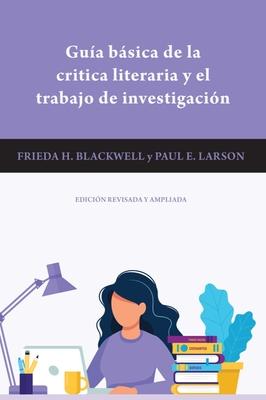Begin or refine your journey to master Spanish-language literature with this revised and expanded edition of Gua bsica de la critica literaria y el trabajo de investigacin. This focused and comprehensible guide empowers students to become better readers and, thus, better writers by focusing on the practice of literary theory, the application of literary criticism, and the structuring of literary essays. Frieda Blackwell and Paul Larson begin with the important questions that any astute reader should ask about literary texts and then give a brief introduction to the main literary theories in use today, including formalism, postmodernism, and ecocriticism. They then address the literary essay, beginning with how to choose a topic and start the research process and advancing to how to structure a literary essay and what to include in each section. The book also discusses best practices for primary and secondary sources, proper citations, paragraphing, and capitalization. With a variety of excerpts from both Spanish and Latin American literature, examples of actual student essays, and a glossary of literary terms in Spanish with their English equivalents, Gua bsica provides students with the tools needed to succeed, whether they are beginning their literary studies or progressing to more advanced literature classes.

Gua Bsica de la Critica Literaria Y El Trabajo de Investigacin
Begin or refine your journey to master Spanish-language literature with this revised and expanded edition of Gua bsica de la critica literaria y el trabajo de investigacin. This focused and comprehensible guide empowers students to become better readers and, thus, better writers by focusing on the practice of literary theory, the application of literary criticism, and the structuring of literary essays. Frieda Blackwell and Paul Larson begin with the important questions that any astute reader should ask about literary texts and then give a brief introduction to the main literary theories in use today, including formalism, postmodernism, and ecocriticism. They then address the literary essay, beginning with how to choose a topic and start the research process and advancing to how to structure a literary essay and what to include in each section. The book also discusses best practices for primary and secondary sources, proper citations, paragraphing, and capitalization. With a variety of excerpts from both Spanish and Latin American literature, examples of actual student essays, and a glossary of literary terms in Spanish with their English equivalents, Gua bsica provides students with the tools needed to succeed, whether they are beginning their literary studies or progressing to more advanced literature classes.